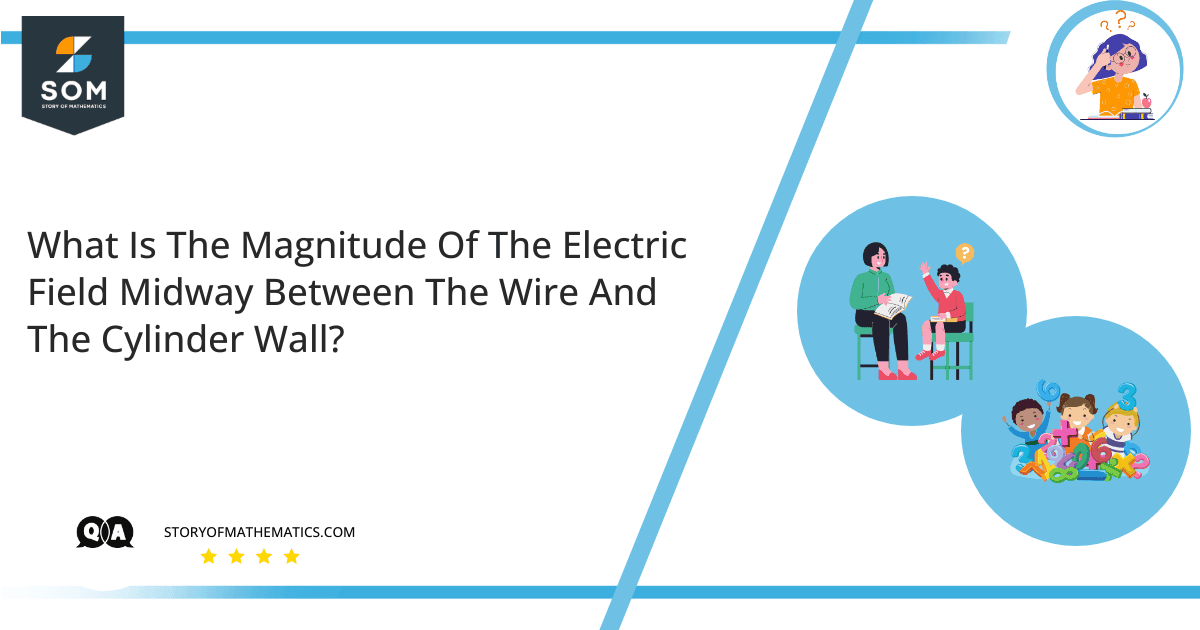
The aim of this question is to understand the basic working principle of the electrostatic precipitator by applying the key concepts of static electricity including electric field, electric potential, electrostatic force, etc.
Electrostatic precipitators are used to remove undesired particles (especially pollutants) from smoke or effluent gases. They are used mostly in coal-powered power plants and grain processing plants. The simplest precipitator is a vertically stacked hollow metallic cylinder containing a thin metallic wire insulated from the outer cylindrical shell.
A potential difference is applied across the central wire and the cylindrical body that creates a strong electrostatic field. When the soot is passed through this cylinder, it ionizes the air and its constituent particles. The heavy metallic particles are attracted towards the central wire and hence the air is cleaned.
Expert Answer
For an electrostatic precipitator, the magnitude of the electric field can be calculated by using the following equation:
\[ E \ = \ \dfrac{ V_{ ab } }{ ln( \frac{ b }{ a } ) } \times \dfrac{ 1 }{ r } \]
Given that:
\[ V_{ ab } \ = \ 50 \ kV \ = \ 50000 \ V \]
\[ b \ = \ 14 \ cm \ = \ 0.140 \ m \]
\[ a \ = \ 90 \ \mu m \ = \ 90 \times 10^{ -6 } \ m \]
\[ r \ = \ \dfrac{ 0.140 }{ 2 } \ m \ = \ 0.07 \ m \]
Substituting the given values in the above equation:
\[ E \ = \ \dfrac{ 50000 }{ ln( \frac{ 0.140 }{ 90 \times 10^{ -6 } } ) } \times \dfrac{ 1 }{ 0.070 } \]
\[ E \ = \ \dfrac{ 50000 }{ ln( 1555.56 ) \times 0.070 } \]
\[ E \ = \ \dfrac{ 50000 }{ 7.35 \times 0.070 } \]
\[ E \ = \ \dfrac{ 50000 }{ 0.51 } \]
\[ E \ = \ 98039.22\]
\[ E \ = \ 9.80 \times 10^{ 4 } \ V/m \]
Numerical Result
\[ E \ = \ 9.80 \times 10^{ 4 } \ V/m \]
Example
What will be the electrostatic force if we half the applied potential difference?
Recall:
\[ E \ = \ \dfrac{ V_{ ab } }{ ln( \frac{ b }{ a } ) } \times \dfrac{ 1 }{ r } \]
Given that:
\[ V_{ ab } \ = \ 25 \ kV \ = \ 25000 \ V \]
\[ b \ = \ 14 \ cm \ = \ 0.140 \ m \]
\[ a \ = \ 90 \ \mu m \ = \ 90 \times 10^{ -6 } \ m \]
\[ r \ = \ \dfrac{ 0.140 }{ 2 } \ m \ = \ 0.07 \ m \]
Substituting the given values in the above equation:
\[ E \ = \ \dfrac{ 25000 }{ ln( \frac{ 0.140 }{ 90 \times 10^{ -6 } } ) } \times \dfrac{ 1 }{ 0.070 } \]
\[ E \ = \ \dfrac{ 50000 }{ ln( 1555.56 ) \times 0.070 } \]
\[ E \ = \ \dfrac{ 50000 }{ 7.35 \times 0.070 } \]
\[ E \ = \ \dfrac{ 25000 }{ 0.51 } \]
\[ E \ = \ 49019.61 \]
\[ E \ = \ 4.90 \times 10^{ 4 } \ V/m \]
